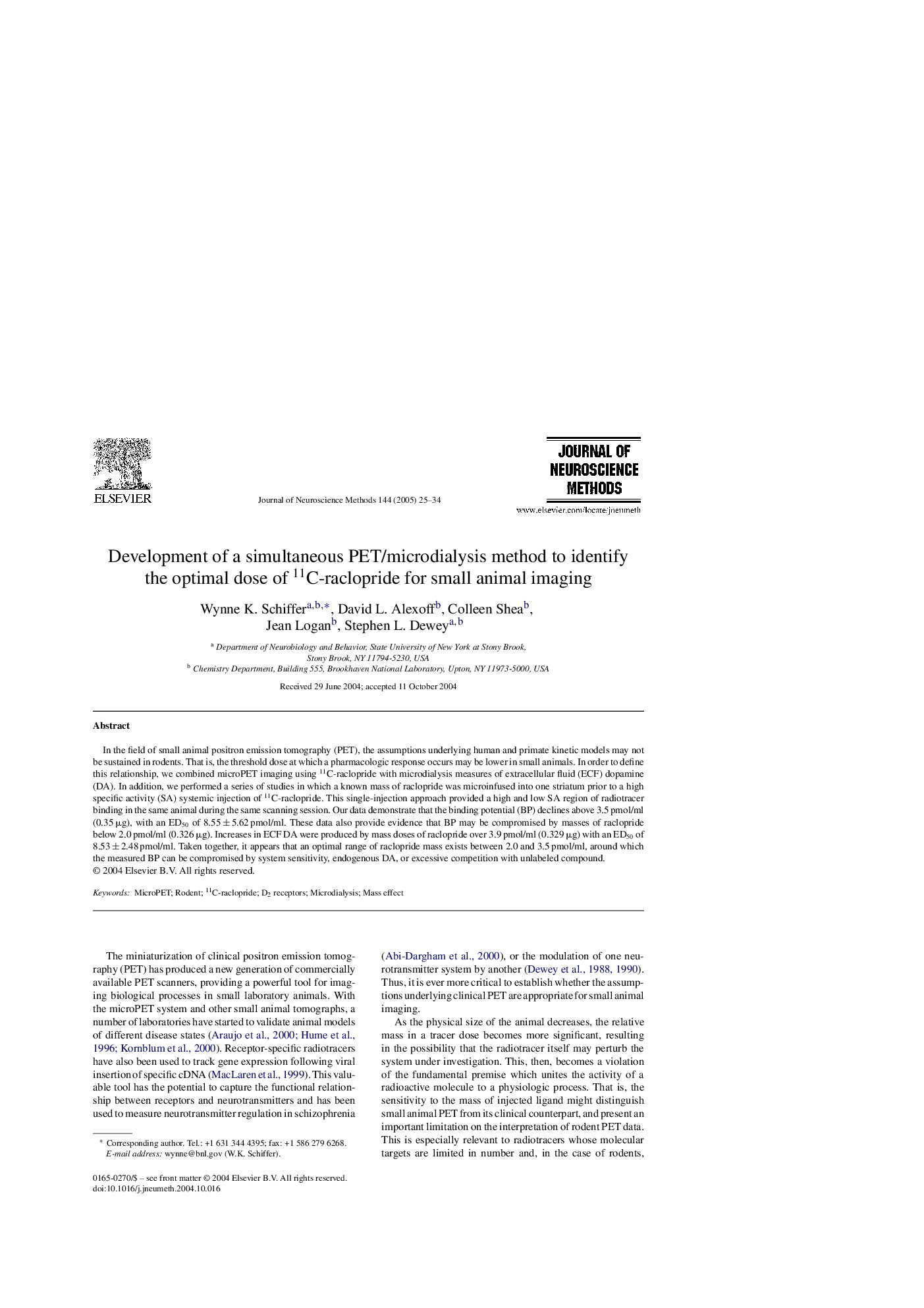| Article ID | Journal | Published Year | Pages | File Type |
|---|---|---|---|---|
| 9424288 | Journal of Neuroscience Methods | 2005 | 10 Pages |
Abstract
In the field of small animal positron emission tomography (PET), the assumptions underlying human and primate kinetic models may not be sustained in rodents. That is, the threshold dose at which a pharmacologic response occurs may be lower in small animals. In order to define this relationship, we combined microPET imaging using 11C-raclopride with microdialysis measures of extracellular fluid (ECF) dopamine (DA). In addition, we performed a series of studies in which a known mass of raclopride was microinfused into one striatum prior to a high specific activity (SA) systemic injection of 11C-raclopride. This single-injection approach provided a high and low SA region of radiotracer binding in the same animal during the same scanning session. Our data demonstrate that the binding potential (BP) declines above 3.5 pmol/ml (0.35 μg), with an ED50 of 8.55 ± 5.62 pmol/ml. These data also provide evidence that BP may be compromised by masses of raclopride below 2.0 pmol/ml (0.326 μg). Increases in ECF DA were produced by mass doses of raclopride over 3.9 pmol/ml (0.329 μg) with an ED50 of 8.53 ± 2.48 pmol/ml. Taken together, it appears that an optimal range of raclopride mass exists between 2.0 and 3.5 pmol/ml, around which the measured BP can be compromised by system sensitivity, endogenous DA, or excessive competition with unlabeled compound.
Related Topics
Life Sciences
Neuroscience
Neuroscience (General)
Authors
Wynne K. Schiffer, David L. Alexoff, Colleen Shea, Jean Logan, Stephen L. Dewey,
